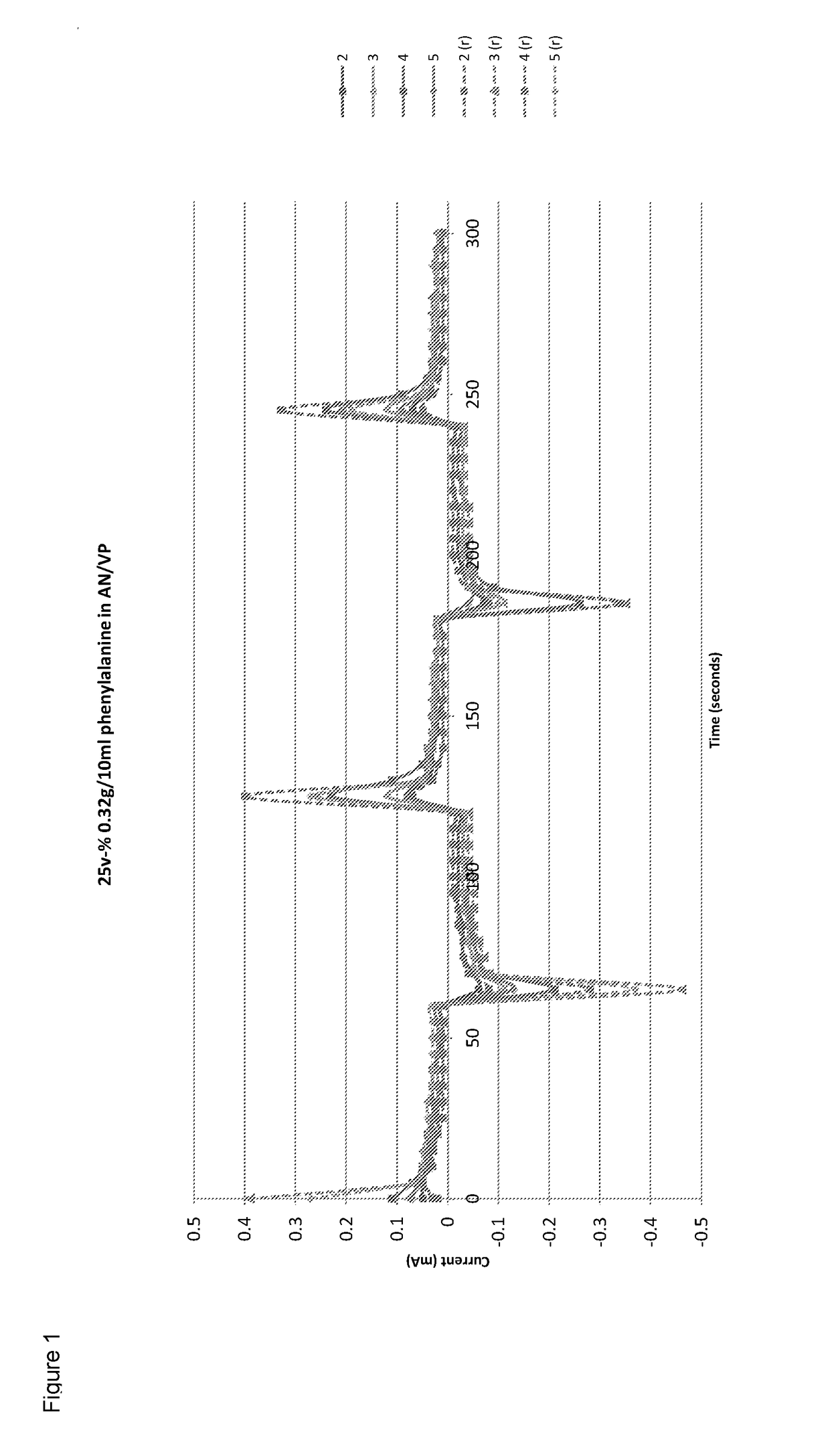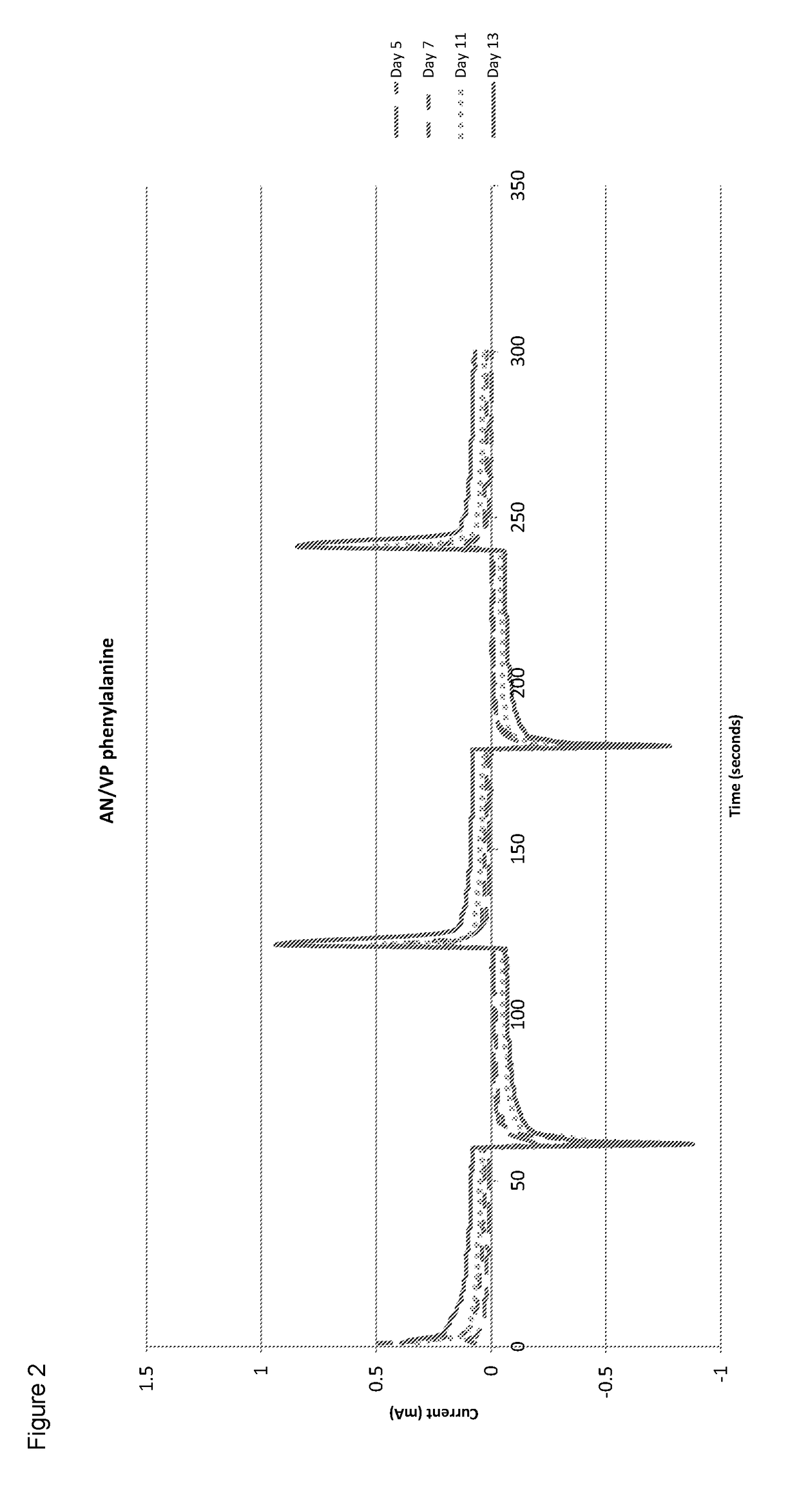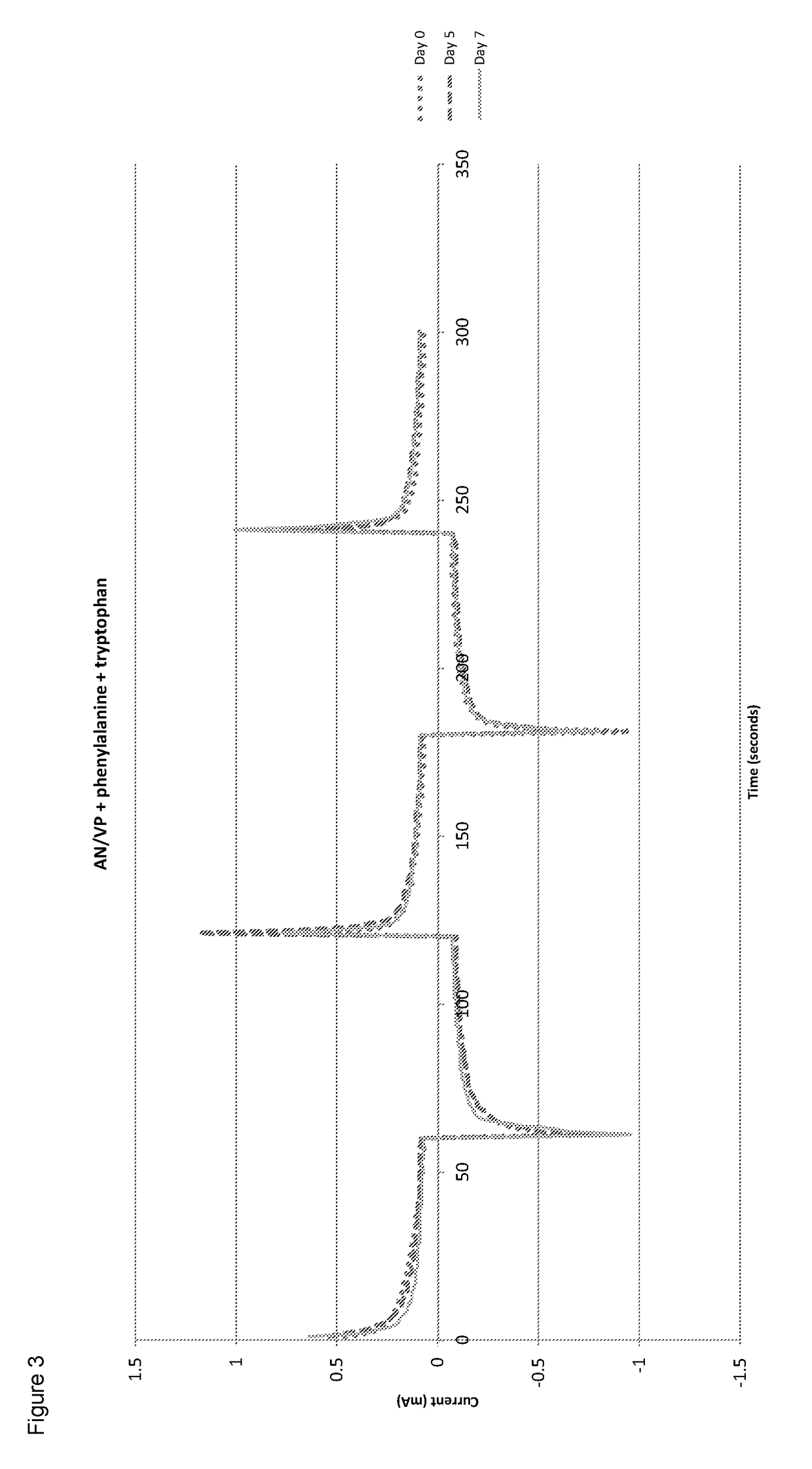Electrically active hydrophilic bio-polymers
- Summary
- Abstract
- Description
- Claims
- Application Information
AI Technical Summary
Benefits of technology
Problems solved by technology
Method used
Image
Examples
example 1
[0078]Method 1 in which the Amino Acids or Acids are Dissolved in Water the Resulting Solution being Added to the Other Co-Monomers.
[0079]A solution of phenylalanine in water was formed by dissolving 0.32 g of phenylalanine in 10 ml of water at 50° C. whilst stirring using a magnetic stirrer bar. (This was the maximum concentration possible at the given temperature and was in agreement with published data relating concentration to temperature). 25% by volume (0.5 ml) of the aqueous solution was then added drop-wise to a stirred mixture consisting of 1 ml of acrylonitrile and 1 ml of 1-vinyl-2-pyrrolidone (2 ml total). 0.075 ml of allyl methacrylate as the cross-linker and 0.05 ml of 2-hydroxy-2-methylpriophenone as the initiator was then added to the mixture. It was then cured under UV for approximately 10 minutes until the result was a solid cross-linked co-polymer. Alternative initiators such as AIBN can be used for thermal polymerisation.
[0080]The conductivity was tested and the ...
example 2
[0082]Method 2 in which the Amino Acid or Acids are Dissolved in a Pre-Mixed Solution Consisting of the Other Co-Monomers and Water.
[0083]A solution was formed by mixing 1 ml of acrylonitrile and 1 ml of 1-vinyl-2-pyrrolidone with 0.5 ml of water. 0.02 g of phenylalanine was added and the mixture was heated at 50° C. and stirred with a magnetic stirrer bar. It was found that the amount of amino acid that could be completely dissolved into the monomer+water mixture exceeded the maximum concentration possible at the given temperature possible by Method 1 and significantly exceeded the amount given in the published data.
[0084]0.075 ml of allyl methacrylate as the cross-linker and 0.05 ml of 2-hydroxy-2-methylpriophenone as the initiator was added to the mixture. It was then cured under UV for 10 minutes to produce a solid cross-linked co-polymer.
[0085]The cross-linked polymers are hydrated in DD water until equilibrium has reached and the electrical properties are tested periodically o...
example 3
[0087]Samples Made with a Mixture of Two Amino Acids Using Method 2 in which the Amino Acids are Dissolved in a Pre-Mixed Solution Consisting of the Other Co-Monomers and Water.
[0088]A solution was formed by mixing 1 ml of acrylonitrile and 1 ml of 1-vinyl-2-pyrrolidone with 0.5 ml of water. 0.02 g of phenylalanine and 0.06 g of tryptophan was added and the mixture was stirred and heating at 50° C. with a magnetic stirrer bar. 0.075 ml of allyl methacrylate as the cross-linker and 0.05 ml of 2-hydroxy-2-methylpriophenone as the initiator was added to the mixture. It was then cured under UV to produce a cross-linked co-polymer.
[0089]The conductivity was tested and the results are shown in FIG. 3. The electrical measurements again showed an increase in maximum current with time after hydration.
PUM
| Property | Measurement | Unit |
|---|---|---|
| Time | aaaaa | aaaaa |
| Fraction | aaaaa | aaaaa |
| Fraction | aaaaa | aaaaa |
Abstract
Description
Claims
Application Information
 Login to View More
Login to View More - R&D
- Intellectual Property
- Life Sciences
- Materials
- Tech Scout
- Unparalleled Data Quality
- Higher Quality Content
- 60% Fewer Hallucinations
Browse by: Latest US Patents, China's latest patents, Technical Efficacy Thesaurus, Application Domain, Technology Topic, Popular Technical Reports.
© 2025 PatSnap. All rights reserved.Legal|Privacy policy|Modern Slavery Act Transparency Statement|Sitemap|About US| Contact US: help@patsnap.com



